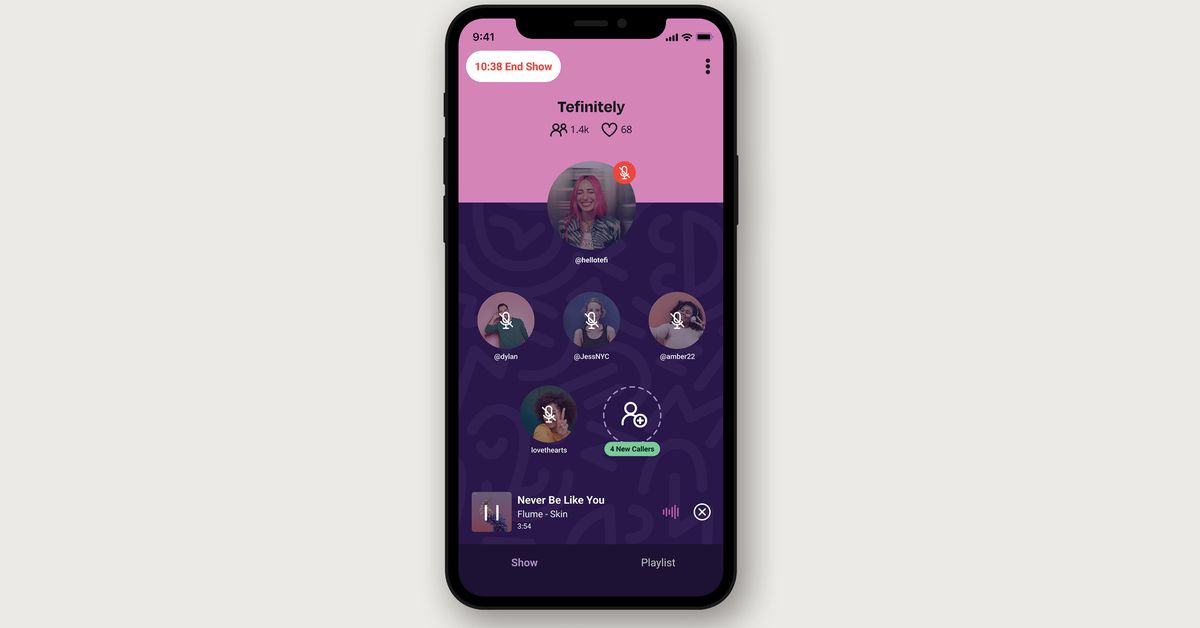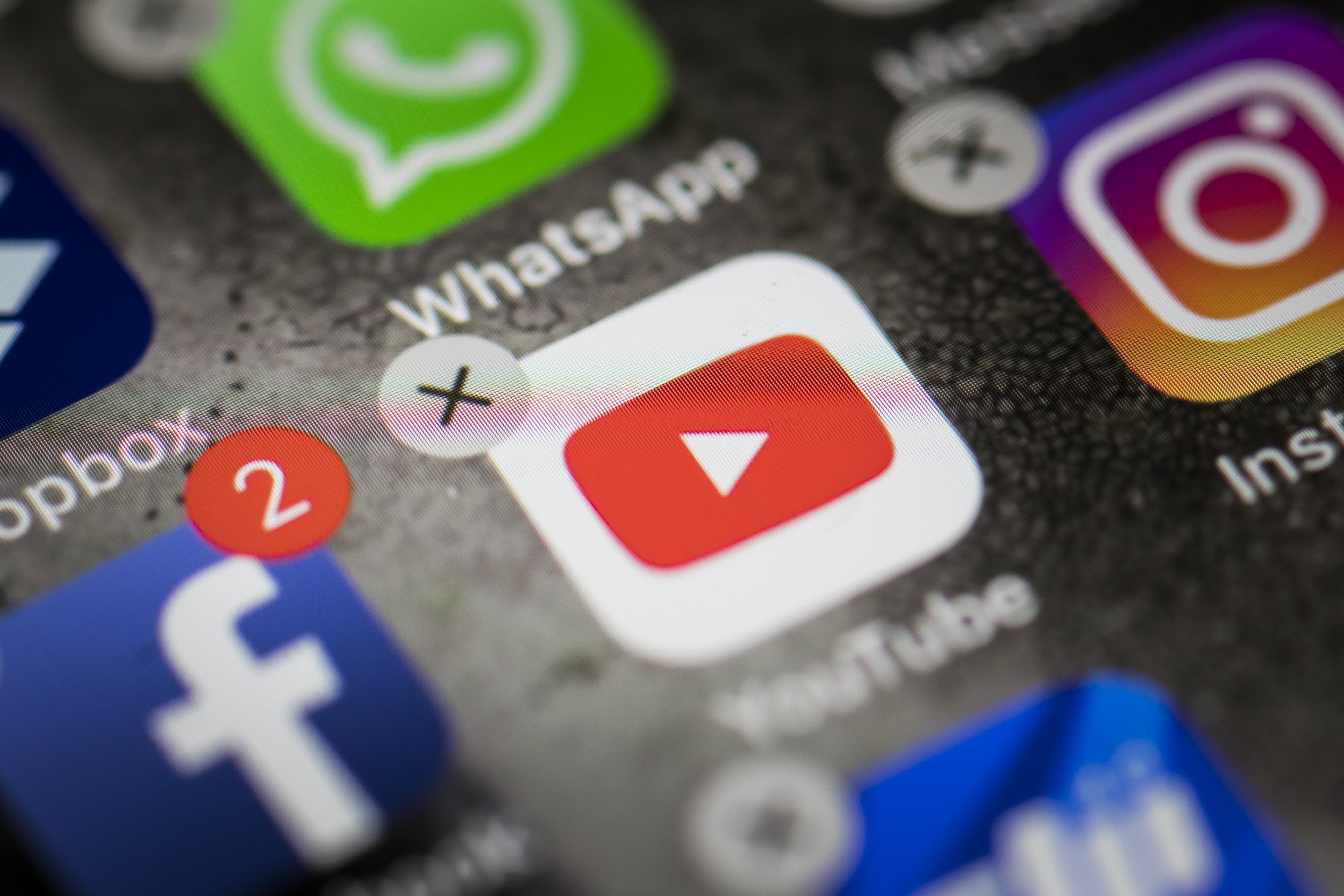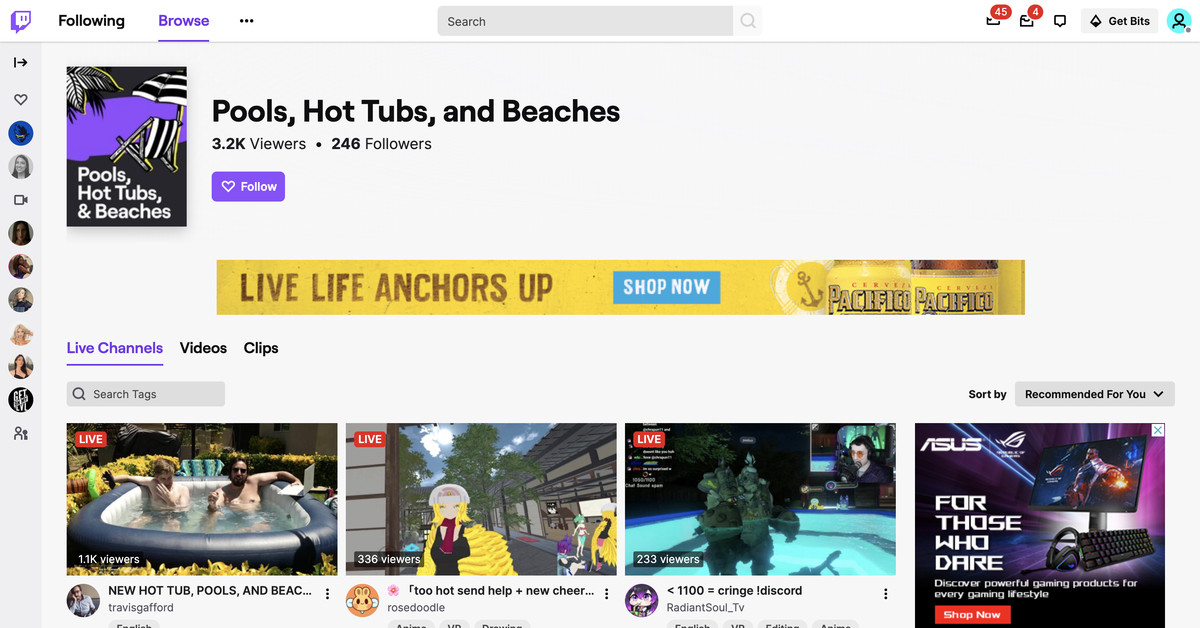Google Pixel 7 and Pixel 7 Pro review: better and better
They’re not quite the super-helpful, ultra-intelligent phones that Google wants them to be, but the latest Pixel devices are more competitive than ever Continue reading…
The Pixel 7 and 7 Pro feel like fully realized, more refined versions of the phones Google launched last year. The Pixel 6 and 6 Pro marked a new chapter for Google’s mobile devices, with a bold new design and a brand new processor. They were ambitious, often great devices with a few rough edges. Google hasn’t completely smoothed them over in this iteration, but it has created a pair of phones that feel like worthy competitors to the iPhones and Samsung Galaxies of the world. They’re what the Pixel 6 and 6 Pro should have been: a year late, but better late than never.
At the top of the Pixel 7 and 7 Pro’s spec sheet is Tensor G2, the second version of the chipset Google introduced last year, and it powers several of the devices’ refinements. There are some updated speech recognition and calling features, but Tensor G2’s most impactful contributions to the Pixel experience are in the camera app. There are some other hardware-related improvements, too, like the long-overdue addition of face unlock. It’s nothing groundbreaking, but it’s a worthwhile quality-of-life enhancement compared to the sluggish in-screen fingerprint reader on the Pixel 6.
In this new Tensor era, Google has a different idea about what a smartphone should be: intelligent and helpful, easing the pain of mundane tasks like calling customer service. This execution isn’t flawless, but it’s an improvement. At their best, the Pixel 7 and 7 Pro are capable of truly impressive feats. The Recorder app’s live transcription — a Pixel-exclusive feature made spookily good by Tensor — is so reliable it’s become an essential tool for my work. And when the Pixel camera is good, it’s really good.
Other times, the Pixel 7 and 7 Pro stumble, turning in results that just don’t match up with Google’s lofty vision. The much-touted Magic Eraser tool to remove unwanted elements from the background of an image has yet to really impress me, and this year’s Photo Unblur feature is equally underwhelming. There’s room for improvement in a lot of departments, but the Pixel 7 and 7 Pro are better than their predecessors in some small yet significant ways.
Photo by Amelia Holowaty Krales / The Verge
The hardware
Not much has changed about the Pixel 7 and 7 Pro’s screens. The 6.3-inch OLED on the Pixel 7 is a smidge smaller than the 6.4-inch Pixel 6 (with no change in resolution), but it’s still capped at a 90Hz top refresh rate. The Pro model continues to offer a huge 6.7-inch 120Hz display with slightly smoother scrolling and animations. Google says they’re both 25 percent brighter in direct sunlight — I have a hard time seeing the difference between the Pixel 6 Pro and Pixel 7 Pro at peak brightness, but in any case, both the 7 and 7 Pro are comfortable to use outdoors in bright conditions.
Big screens make for big devices, and even with the Pixel 7’s slight downsizing, both it and the Pixel 7 Pro look and feel like big phones. They use the same design language introduced with the Pixel 6 series, including that attention-grabbing horizontal camera bar. I’m still not fond of it, but this year’s treatment is a bit more refined. The Pixel 6 and 6 Pro went for a more playful look, with bolder colors contrasting heavily against a black camera bar.
Photo by Amelia Holowaty Krales / The Verge
This time, the colors are softer, and the camera bar is either polished or matte aluminum, depending on whether you pick the 7 Pro or the 7. It’s a little more grown-up-looking, like the Pixel 6 got a mortgage and a fuel-efficient family car, and I like it quite a bit. My hazel-colored 7 Pro review unit looked right at home next to the fancy-ish beige-colored clutch I took with me on a night out. I can’t say the same about the Pixel 6 or 6 Pro.
The protruding camera bar does tend to collect lint if you’re the kind of person who lives throws their caseless phone in the bottom of a dusty bag. Most sensible people will put a case on, which is a good life choice — the glossy back panels and slightly curved sides make both phones a little slippery in the hand. That said, they’re not terribly uncomfortable without one. The bottom of the camera bar can act as a little ledge slash Pop Socket so it can rest on top of my index finger while I’m using it. It’s a little too high to do that for too long, but if I’m fiddling with it one-handed, it’s actually kind of helpful.
Photo by Amelia Holowaty Krales / The Verge
The 7 and 7 Pro have all the other usual trimmings of flagship status: they’re IP68-rated for robust water and dust resistance, and they support 30W fast wired charging. To get the fastest wireless charging speeds, you’ll need Google’s $79 second-gen Pixel Stand charger; with it, the Pixel 7 gets 20W charging, and the 7 Pro supports 23W. Otherwise, they support a perfectly serviceable 12W rate with standard Qi chargers. There’s no charger in the box (those days are over), but at least there’s a physical SIM tray. There’s also support for one eSIM, and it is possible to transfer one over from an iPhone, albeit with at least one call to customer support. Ask me how I know. (Both phones also support dual SIM if you use the physical and eSIM at the same time.)
The Pixel 7 and 7 Pro include two methods for biometric unlocking: fingerprint and face. Face unlock is a new addition this year, likely to address complaints that the Pixel 6 series’ under-display fingerprint scanner was too slow. Google has also done some work on the fingerprint scanner — company spokesperson Alex Moriconi tells The Verge that the sensor has a “30% latency improvement” over the one on the Pixel 6 series, and it does feel a beat faster to me.
It’s still an optical-type scanner that briefly flashes bright light where the sensor is located under the screen to read your fingerprint, which is a little jarring in a dark bedroom. In any case, I set up face and fingerprint unlock on both the 7 and 7 Pro, and between the two, the phone would unlock quickly enough that I never felt frustrated — not the case with the sluggish fingerprint reader on the 6 and 6 Pro. Unfortunately, Moriconi tells us that Google has no plans to bring face unlock to the Pixel 6 series. Bummer.
I can’t say the Pixel 7 Pro has been my favorite phone to use as a phone
I’m not quite as convinced by Google’s improvements to phone calls. Pixel 6 owners complained about dropped calls and other connectivity problems, and although Google says it’s using a new modem, I had a couple of issues. On one call, the person on the other end said that the phone was sometimes cutting off the last syllable of my sentences. Another time, the caller said I got cut off as I was talking. This was an urgent-care nurse calling to tell me that my spot on the waitlist had come up, so it was a particularly stressful time for my call to cut out. Things worked out fine, and I got to my appointment, but your phone should work as a phone when you need it to.
These two calls represent a very small sample size, so this is something we’ll be keeping an eye on during long-term testing. Google has promised a Tensor-powered “clear calling” feature coming to the Pixel 7 phones (as well as Pixel 6) in the future that will make it easier to hear calls even in loud environments. In the meantime, I can’t say the Pixel 7 Pro has been my favorite phone to use as a phone.
Photo by Amelia Holowaty Krales / The Verge
Google doesn’t make any fantastic claims for the Pixel 7 and 7 Pro’s battery performance — just that they “can last over 24 hours,” according to the Google Store website. Google claims you can get up to three days of use with extreme battery saver enabled, but I can’t live like that. Instead, I can at least report that Google’s all-day battery claims are accurate. My first full day using the 7 Pro was a long travel day with plenty of time in the back of an Uber or scrolling Twitter while standing in airport lines, plus some navigation and video recording. Even so, I only managed to drain the Pixel 7 Pro down to about 30 percent by the end of the night. On a couple of other days of moderate use with lots of time off Wi-Fi, using navigation, taking photos, and scrolling Twitter, I was pleasantly surprised to find the battery only down around 50 percent by bedtime.
The same goes for the Pixel 7. Its battery is smaller — 4,355mAh compared to the 7 Pro’s 5,000mAh — but the lower refresh rate and resolution seem to give it roughly equivalent battery life — a moderate day of use knocks it down about 50 percent. I wouldn’t feel great about either phone getting through two busy days on a single charge, but even a heavy user can get through a single day without having to recharge.
Photo by Amelia Holowaty Krales / The Verge
There are a handful of other assistant and speech recognition features new to the Pixel 7 — some of which Google will bring to the Pixel 6 series — and I can’t say I’m terribly impressed with any of them. When you call a business with an automated phone tree, Direct My Call now shows the options on-screen even before they’re spoken, a step beyond the feature on the Pixel 6, which transcribes them as they’re read. It worked with the numbers Google suggested for testing, like Home Depot customer service, but didn’t with a couple of national chain stores I call regularly (shout out to the Walgreens pharmacy and PetSmart curbside pickup). Google’s Moriconi says the Pixel 6 won’t get this Direct My Call enhancement.
Other improvements work fine, but they’re small updates and kind of underwhelming. The phone will automatically transcribe audio files sent as messages, which is helpful. But it’s also the kind of thing I figured the phone could already do, and anyway, my friends all send me old-fashioned text messages, so it’s not something that makes my life easier. Likewise, At a Glance, a handy little Assistant-powered status indicator on the lock screen and always-on display, now shows more context-based information, like the weather forecast in the morning — helpful but not life-changing.
Photo by Amelia Holowaty Krales / The Verge
Google Pixel 7 and Pixel 7 Pro camera
The Pixel 7 and 7 Pro’s camera upgrades are likewise small in scale, but I think they have a bigger impact. There’s no change to the main camera sensor this year; both the Pixel 7 and 7 Pro use the same 50-megapixel f/1.85 camera as last year. They both include a 12-megapixel ultrawide, too, though the 7 Pro’s version has autofocus and can double as a macro camera.
The 7 Pro also has a 48-megapixel telephoto camera with up to 5x optical zoom compared to last year’s 4x. The Pixel 7 still doesn’t get the telephoto module, but its selfie cam does get upgraded to the same 10.8-megapixel sensor that’s in the 7 Pro and the 6 Pro.
Google Pixel 7 and Pixel 7 Pro sample gallery
As Samsung and Apple released new flagships this year, I couldn’t help wondering if the Pixel 6 Pro was getting left behind. Its portrait mode looked crunchy in comparison to the new competition, with less-precise subject cutouts. Samsung’s 10x zoom was untouchable compared to anything Google could do with Super Res zoom, and Apple was way ahead with video quality and a decent bokeh video mode.
Over the past week with the Pixel 7 and Pixel 7 Pro, I’ve managed to take some fantastic photos that remind me why we once crowned Google the king of smartphone photography. Portrait mode looks better, and shots of my toddler that I was sure would be blurry came out sharp. Top Shot captured a ridiculously sweet moment between my husband and child — it’s a photo I’m going to look at for years and years to come.
Google has made some interesting improvements to both cameras’ zoom capabilities. The main camera now offers a sensor crop mode that uses the 12 megapixels at the center of its high-res main sensor to provide a full resolution, 2x zoom image without having to rely on digital zoom up-sampling. It’s very similar to the 2x crop mode Apple just included in the iPhone 14. Previous Pixel cameras have included a 2x zoom shortcut in the camera app, but Moriconi tells me that this was digital zoom, not a crop. The results are noticeably better, and I love to see it — I really like the 2x focal length for portrait mode.
The Pixel 7 Pro’s 2x crop (left) looks less crunchy and a little more natural than the Pixel 6 Pro’s 2x Super Res zoom (right) in portrait mode.
The Pixel 7 Pro does this same crop trick with its high-res telephoto camera, essentially doubling the 5x zoom to 10x. This works well enough, though the results aren’t as good as the Samsung S22 Ultra’s dedicated 10x optical zoom. In decent lighting, the Pixel 7 Pro’s 10x images look passable, especially for sharing at social media sizes, but at larger sizes, details are obviously a little fuzzy. At a certain point, cropping in is just going to magnify the flaws of the tiny lens the sensor is attached to, and it looks like the 7 Pro has reached that threshold.
The Pixel 7 Pro’s 10x crop mode (left) doesn’t produce the same level of detail as Samsung’s S22 Ultra (right) and its dedicated 10x camera.
The 7 Pro’s new macro mode is neat, too. It uses the ultrawide camera and is triggered automatically from the 1x camera when you get close up to your subject. A flower macro icon appears on the screen, and you can tap it to toggle the mode on and off. The results are nice when you get the right subject in good lighting, but I wish there was some indication of whether or not your subject is in focus. There’s no warning when you’re too close or too far from an object, and it’s not always easy to see if your subject is in sharp focus — especially if you’re outside. In any case, this is miles better than the low-res, fixed-focus macro cameras on a lot of budget phones, even if it’s something I wouldn’t end up using a whole lot.
Night mode is a full two or three seconds faster than on the Pixel 6 Pro
Night mode is faster this year, and that’s another improvement I’m grateful for. Depending on the scene, it’s a full two or three seconds faster to capture than on the Pixel 6 Pro, and you can now adjust the length of the exposure with a standard and “maximum” setting — it’s not just on or off now. Google paved the way with night mode, but it was starting to feel pretty sluggish compared to Apple and Samsung phones, so it’s nice that the Pixel feels like it’s caught up in that respect.
On the video side, there’s now a mode called Cinematic Blur that — by no coincidence, I’m sure — does what Apple’s Cinematic mode does on the iPhone. It uses software to apply a portrait mode shallow depth-of-field effect to keep your subject in focus while blurring the background. It does a nice job — tricky backgrounds like a tennis court net can trip it up, and it’s not great in low light. But as with the iPhone, it looks better than I expected it to, and it’s something I’ll keep using when the occasion calls for it.
Photo Unblur is another new addition, and it’s one that Google is making a Tensor G2 / Pixel 7 exclusive, at least for now. That’s a little suspect because it’s not technically a camera feature — it lives in the Google Photos app. Photo Unblur identifies images with subject blur — photos taken by any camera, not just the Pixel 7 — and uses machine learning to offer a sharper version of the original image.
Photo Unblur does a nice job of sharpening up the original (left), which was taken about a million years ago on a low-res digital camera. Not all blurry photos benefit equally from Photo Unblur.
Sharpening old, blurry photos is an appealing proposition, and it sort of works, sometimes. I had the best results getting a usable image out of something obviously low-res taken with an old phone or camera, but other results were either too subtle to be noticeable or too processed-looking to be useful. Chalk this one up as a mixed bag and definitely not something to upgrade to a Pixel 7 just to get.
Overall, I think Google’s camera system is indeed keeping up with the very steep competition. There are some ways in which I prefer the iPhone 14’s photos — I prefer its warm color processing — and I still prefer Samsung’s portrait mode photos over the Pixel’s. But as a complete package, the Pixel 7 and 7 Pro have among the best cameras you can find on a smartphone right now.
Photo by Amelia Holowaty Krales / The Verge
I have no problem recommending the Pixel 7 and 7 Pro to those brave enough to look outside of the Apple / Samsung duopoly. They’re slightly better versions of the very good phones Google released last year. Their $599 and $899 price tags are competitive with comparable flagships that tend to start at $799 and reach well above $1,000 for the Pro / Ultra, etc. version of other devices. The Pixel 7 is a heck of a deal for someone who wants a flagship Android phone without paying flagship prices. With its extra bit of polish and that telephoto lens, the 7 Pro is a good option for someone who wants the best of what Android offers — without all the excess of the Galaxy S22 Ultra.
The 7 and 7 Pro are good, sometimes great phones, but at the same time, I think they fall short of the “simply powerful, super helpful” device Google is marketing. It hasn’t quite reached this vision of a device that effortlessly navigates customer service calls for you, blends voice assistant features seamlessly with the rest of your UI, and takes photo bombers out of the background of your shots. These things sort of work sometimes but not well enough to really wow anyone.
But more importantly, the Pixel 7 and 7 Pro do the essentials better than the 6 and 6 Pro did. They unlock more quickly, the camera improvements keep them on par with the competition, and they look and feel like the genuine flagship article. The extra features that don’t quite land are just that — extras. They might one day evolve into something that makes the Pixel a smarter smartphone than the competition, but for now, the 7 and 7 Pro are just plain competitive. For anyone looking for an alternative to the two biggest players in the US, “competitive” is just what we need.
Agree to Continue: Pixel 7 and Pixel 7 Pro
Every smart device now requires you to agree to a series of terms and conditions before you can use it — contracts that no one actually reads. It’s impossible for us to read and analyze every single one of these agreements. But we started counting exactly how many times you have to hit “agree” to use devices when we review them since these are agreements most people don’t read and definitely can’t negotiate.
To use the Pixel 7 and 7 Pro, you must agree to:
The following agreements are optional:
Additionally, if you want to use Google Assistant, you must agree to let Google collect app info and contact info from your devices. Other features like Google Wallet may require additional agreements.
Final tally: five mandatory agreements and at least five optional agreements.

 ValVades
ValVades 
































